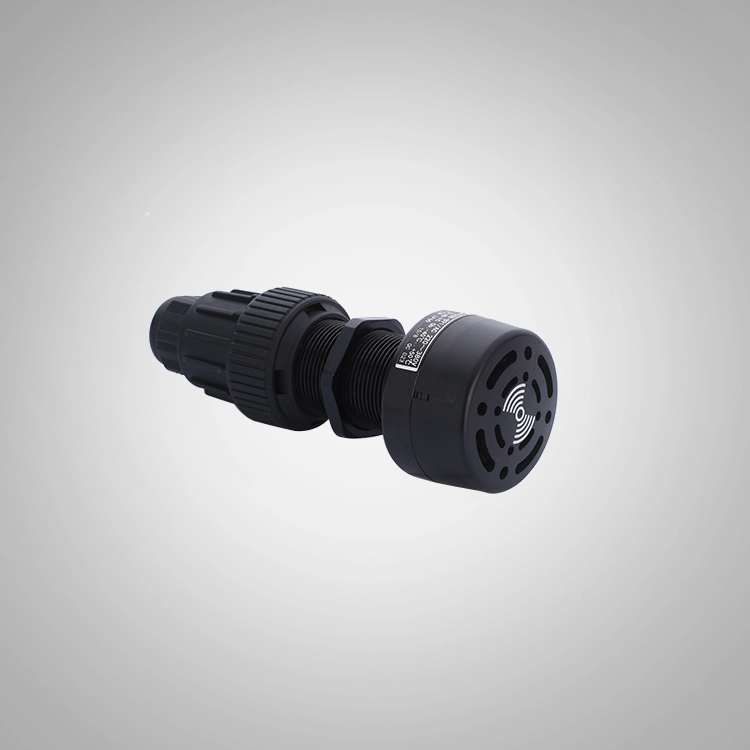Why Choose an Explosion Proof Buzzer for Hazardous Environments?
2025-09-10
In industries where flammable gases, vapors, or dust are present, safety cannot be compromised. One critical device that ensures worker safety and operational reliability is the Explosion Proof Buzzer. These specialized buzzers are engineered to operate safely in hazardous environments, preventing ignition and alerting personnel promptly to potential dangers. Understanding the importance, functionality, and selection criteria for explosion proof buzzers is essential for facility managers, safety engineers, and industrial operators aiming to enhance workplace safety and comply with strict safety regulations.
What is an Explosion Proof Buzzer and How Does It Work?
An Explosion Proof Buzzer is a signaling device designed to produce an audible alarm without sparking or igniting flammable substances in explosive atmospheres. Unlike standard buzzers, which could produce sparks during operation, explosion proof buzzers are built to contain internal explosions and prevent them from spreading to the surrounding environment.
How it Works:
The key principle lies in its sealed design. The internal components, including the sound-producing element and electrical contacts, are housed within a robust casing that can withstand internal ignition without rupturing. This ensures that any accidental spark or arc inside the device is contained, eliminating the risk of triggering external explosions.
These devices are widely used in industries such as petrochemical plants, oil and gas facilities, chemical storage units, mining operations, and grain processing plants. They serve as an immediate alert system for hazardous conditions, such as gas leaks, equipment malfunctions, or fire outbreaks.
Key Features:
-
Explosion-proof certification: Compliance with international safety standards such as ATEX, IECEx, and UL ensures reliability in hazardous environments.
-
High decibel output: Audible alarms typically range from 85 dB to 120 dB for maximum reach in noisy industrial areas.
-
Durable construction: Enclosures made of stainless steel, aluminum alloy, or reinforced polymers resist corrosion, impact, and environmental stress.
-
Temperature tolerance: Designed to operate in extreme temperatures from -40°C to +85°C depending on model.
-
Easy installation: Mounting options include wall, ceiling, or panel configurations for flexibility.
| Parameter | Specification Range |
|---|---|
| Operating Voltage | 12V DC – 220V AC |
| Sound Pressure Level | 85 – 120 dB |
| Enclosure Material | Stainless Steel, Aluminum Alloy, Polycarbonate |
| Ingress Protection | IP65 – IP67 |
| Temperature Range | -40°C to +85°C |
| Certification | ATEX, IECEx, UL, CSA |
| Audible Frequency | 1 kHz – 3 kHz |
| Mounting Type | Wall, Ceiling, Panel |
Explosion proof buzzers are not merely alarms—they are a vital part of industrial safety protocols. Their robust design and adherence to strict standards make them indispensable in any environment where explosive risks exist.
Why is Selecting the Right Explosion Proof Buzzer Critical for Safety?
Choosing the correct explosion proof buzzer is more than a compliance requirement; it directly impacts worker safety, operational continuity, and regulatory adherence. A substandard buzzer can fail in critical moments, causing severe consequences, including equipment damage, injuries, or even fatalities.
Considerations for Selection:
-
Hazard Classification:
Industries are divided into zones based on the likelihood of explosive atmospheres. Selecting a buzzer that matches the zone classification (e.g., Zone 1, Zone 2) ensures safety compliance. -
Volume and Range Requirements:
Industrial environments are noisy. The buzzer’s sound output must be audible across the required coverage area. Multiple buzzers may be necessary for large facilities. -
Environmental Factors:
Factors such as moisture, dust, temperature extremes, and chemical exposure influence material choice and protective ratings. -
Regulatory Compliance:
Global safety standards like ATEX in Europe, IECEx internationally, and UL in the United States dictate the design, testing, and certification of explosion proof devices. Non-compliance can result in fines, legal issues, or insurance denial. -
Maintenance and Longevity:
Devices designed for minimal maintenance and extended service life reduce operational costs and ensure continuous safety monitoring.
By carefully evaluating these factors, organizations can prevent accidents, protect assets, and maintain uninterrupted operations. An explosion proof buzzer is not a luxury—it is a necessity in hazardous workspaces where split-second alerts can save lives.
How Can Explosion Proof Buzzers Enhance Industrial Efficiency?
Beyond safety, explosion proof buzzers contribute to operational efficiency by facilitating rapid response and minimizing downtime. Quick alert systems reduce the time required for personnel to react to emergencies, decreasing potential damage and production loss.
Efficiency Benefits:
-
Rapid Hazard Notification: Audible alarms alert workers instantly to gas leaks, fire outbreaks, or mechanical failures, allowing immediate response.
-
Integration with Safety Systems: Explosion proof buzzers can be connected to fire alarm systems, gas detectors, and emergency shutdown mechanisms for automated hazard management.
-
Reduced Downtime: Timely alerts enable proactive interventions, preventing prolonged shutdowns caused by undetected hazards.
-
Enhanced Compliance Reporting: Devices with monitoring capabilities record events, helping industries maintain safety logs and regulatory compliance documentation.
Common Applications:
-
Oil & Gas Refineries
-
Chemical Manufacturing Plants
-
Pharmaceutical Production
-
Grain Silos and Processing Facilities
-
Mining Operations
-
Paint and Coating Workshops
The combination of reliable alerts and seamless integration with safety systems makes explosion proof buzzers a cornerstone of both industrial safety and operational continuity.
FAQs About Explosion Proof Buzzers
Q1: Can an explosion proof buzzer operate continuously in hazardous environments?
A1: Yes. Explosion proof buzzers are designed for continuous operation in hazardous zones. Their enclosures prevent sparks from escaping, and high-quality internal components ensure long-term reliability, even under extreme conditions. Regular inspections and compliance with manufacturer guidelines are recommended to maintain optimal performance.
Q2: How do I determine the correct voltage and mounting type for my facility?
A2: The appropriate voltage depends on your facility’s electrical infrastructure—options typically range from 12V DC to 220V AC. Mounting should ensure maximum audibility and visibility while maintaining compliance with safety standards. Wall or ceiling mounting is common, but panel-mounted options may be suitable for control rooms. Assessing your facility’s layout and hazard zones is crucial before installation.
Explosion proof buzzers are an indispensable component of industrial safety systems. With advanced engineering, international certifications, and high durability, these devices ensure both safety and operational efficiency in hazardous environments. Choosing the right model, matching it with your facility’s specific requirements, and maintaining regular checks can prevent accidents, minimize downtime, and protect human lives.
YXFB offers a comprehensive range of explosion proof buzzers designed to meet global safety standards. Our products combine durability, high performance, and ease of integration to provide reliable alerts in any hazardous setting. For inquiries or to request a customized solution, please contact us today.



